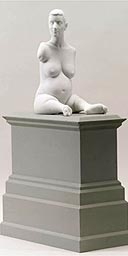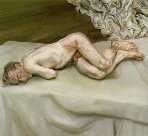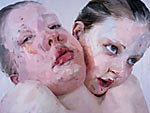 I want to recommend two articles at the Guardian. The first, by Adrian Searle is about the show of new acquisitions at the Saatchi Gallery, “New Blood.” Searle kind of smacks down the collection and its lead-footed curating then uses the opportunity to ruminate about idiosyncratic art collections and collectors in general (substitute Barnes and see how it works). He also gets in a shot about art as tourist destination (if I read him right, he’s ambivalent on the issue) and why after all is said and done collectors are doing us all some kind of service.
I want to recommend two articles at the Guardian. The first, by Adrian Searle is about the show of new acquisitions at the Saatchi Gallery, “New Blood.” Searle kind of smacks down the collection and its lead-footed curating then uses the opportunity to ruminate about idiosyncratic art collections and collectors in general (substitute Barnes and see how it works). He also gets in a shot about art as tourist destination (if I read him right, he’s ambivalent on the issue) and why after all is said and done collectors are doing us all some kind of service.

Second story is “Why shouldn’t my body be art,” about a carved marble figure sculpture of disabled artist Allison Lapper (top image) which will be sited on a plinth in Trafalgar Square soon as part of a fill up the fourth plinth project (apparently the plinth has been empty for 150 years and now they’re going to fill it up with a series of sculptures, each sited there temporarily).

Lapper, who was born severly disabled due to phocomelia, a condition similar to that caused by thalidomide, is a single mom who was featured in a BBC television series a while back. While the BBC filmed her, she was pregnant with her son, Parys, and working with sculptor Marc Quinn who was making a cast of her body for the statue. Read more about Lapper in Vanessa Thorpe‘s backgrounder.
What I find interesting in the public art/Lapper story is how English it all is. The art seems to come out of the Lucien Freud, Francis Bacon, Jenny Savile warts and all tradition, which if we had it here (Alice Neel) was short lived. In England, it’s a true tradition whose non-Hollywood take on the body is refreshing. (middle left image is Freud’s “Naked man on a bed” 1987 and right image is Saville’s “Hyphen,” 1999)

Libby likes the public television aspect of this story. Here’s Libby on Lapper as art: “The thing that interests me is that the reason it may be viable as a public sculpture is the [BBC] tv show, which has made Lapper a part of the public memory.” (bottom image is Neel’s “Andy Warhol,” 1970)









